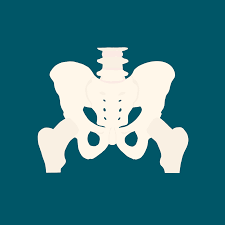Cultivating Pelvic Health
By Katie Ruebush PT, DPT
As both a pelvic physiotherapist and mother of two, I’ve been able to experience pelvic health from both the healthcare professional and patient perspectives. It is clear that women are the caregivers of the world. We tend to care for others while putting our own needs on hold. We must learn to first fill our own cup before filling the cups of our children, significant others, parents, etc. In order to fulfill these roles, we must prioritize self care.
Women’s health physiotherapy encompasses caring for women throughout their lifespan to prevent and resolve a variety of symptoms including:
- Urinary, fecal, or gas leakage
- Increased urinary frequency (day/night)
- Constipation
- Pelvic pain
- Pain during intercourse
- Low back, hip or abdominal pain
- Difficulty emptying the bladder
- Prolapse
- Sexual Dysfunction
These symptoms are common, but NOT symptoms we have to live with!
 So, what is the pelvic floor?
So, what is the pelvic floor?
The pelvic floor is a group of muscles that sits in your pelvis like a hammock. When contracting, the pelvic floor prevents leakage of urine, feces, and gas. When relaxed, it allows us to urinate, defecate, and release gas. If these muscles are not functioning properly and optimally, it can lead to dysfunction which can manifest as pain, pelvic pressure, and urinary or bowel symptoms.
What leads to pelvic floor dysfunction?
Several factors influence the pelvic floor. The pelvic floor muscles can be underactive or overactive. When the muscles are weak, they cannot hold to prevent leakage. Besides strength, these muscles also need endurance, power, and proper coordination to function–just like our other muscles. When the muscles are overactive and overused, they do not live and function at the correct length and tension and therefore cannot generate enough force to prevent leakage. Just like our other body parts, the pelvic floor needs to work through a full range of motion to function optimally. Imagine doing a bicep curl only in the last 20 degrees of that movement–there is no force generation! When the pelvic floor is contracting too much of the time, it also becomes fatigued and cannot fire when you need it to, leading to leakage.
Pelvic pain is usually due to an overactive pelvic floor and sometimes an overactive nervous system. Factors that influence the pelvic floor vary from person to person and can include the following:
- Posture
- Alignment
- Movement Mechanics
- Weight (Body Mass Index)
- Pregnancy
- Childbirth (vaginal/c-section)
- Hormones (particularly estrogen)
- Stress
- Trauma (physical/psychological)
- Diet
- Activities such as heavy lifting, exercise, and daily tasks
What can you do to prevent or resolve pelvic floor dysfunction?
Small daily practices that have a large impact on your pelvic floor include and are not limited to the following:
Poop and Pee Properly
There is actually a correct way to empty your bowel and bladder! Avoiding straining and pushing during urination and defecation reduces stress on the pelvic floor.
Use proper positions and postures
Poor posture and mechanics can stress the pelvic floor in more ways than one. If the spine is not stacked optimally on the pelvis, the pelvic floor and organs are compressed. Impaired movement patterns create an impaired length-tension relationship in the pelvic floor muscles and prevent these muscles from performing optimally.
General Wellness
A major risk factor for prolapse is BMI (Body Mass Index). Maintaining a healthy weight and an ideal body fat percentage greatly impacts the pelvic floor. Not only does more weight create more pressure on the pelvic structures, recent research tells us that fat infiltrates skeletal muscle including the pelvic floor muscles. When muscle contains fat, it does not contract and function as well as when it is composed of healthy muscle tissue. Although cardiovascular training is important, new research is telling us that strength training may be even more important for women. Specifically strengthening your hips and abdominals in the correct way significantly improves your pelvic health.
Manage stress
Increased mental stress increases cortisol levels in the blood which is detrimental to the brain, bones, and muscles including the pelvic floor.
See a pelvic PT
A pelvic floor physiotherapist can evaluate and treat your pelvic concerns and discuss prevention strategies specific to your needs and personal goals.
To learn more, be in touch.

